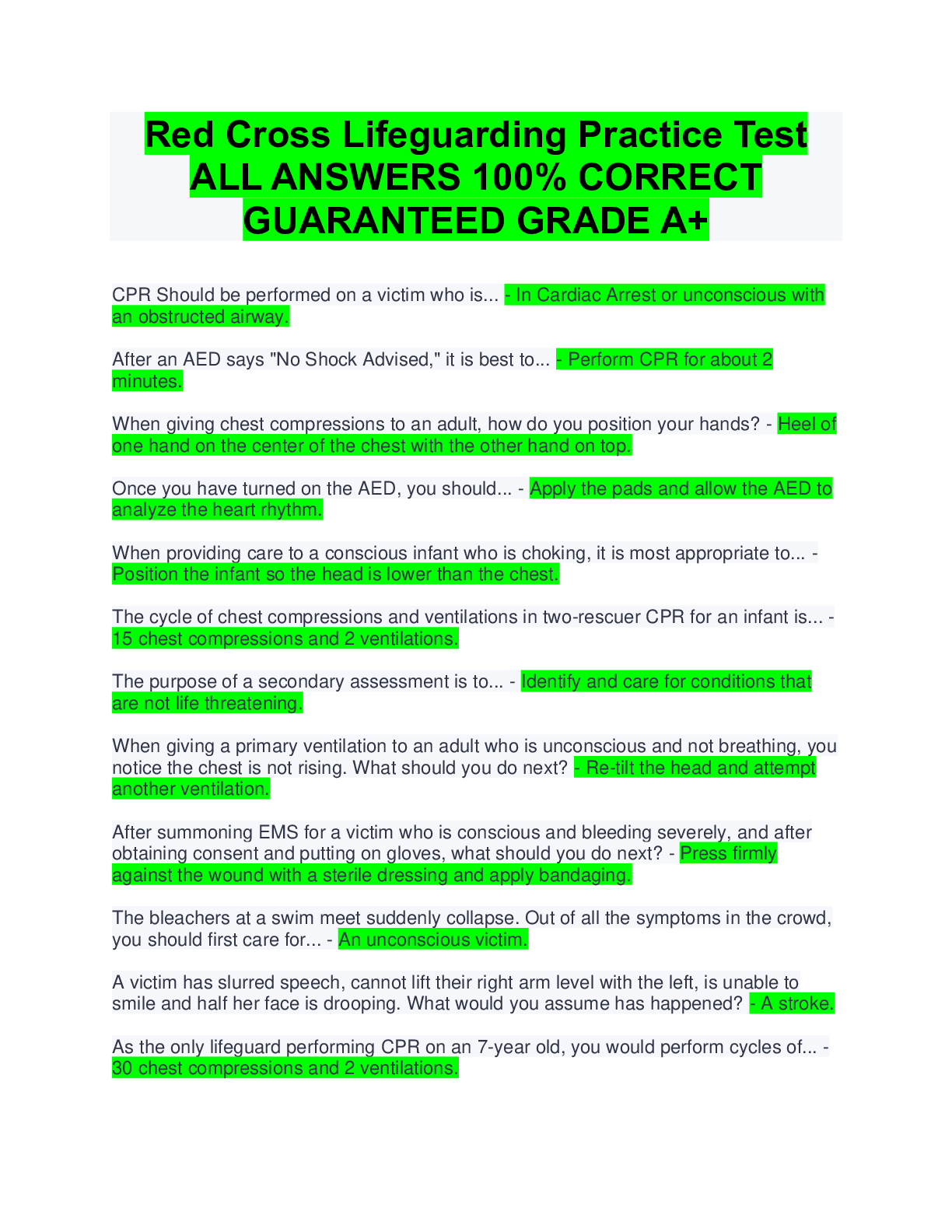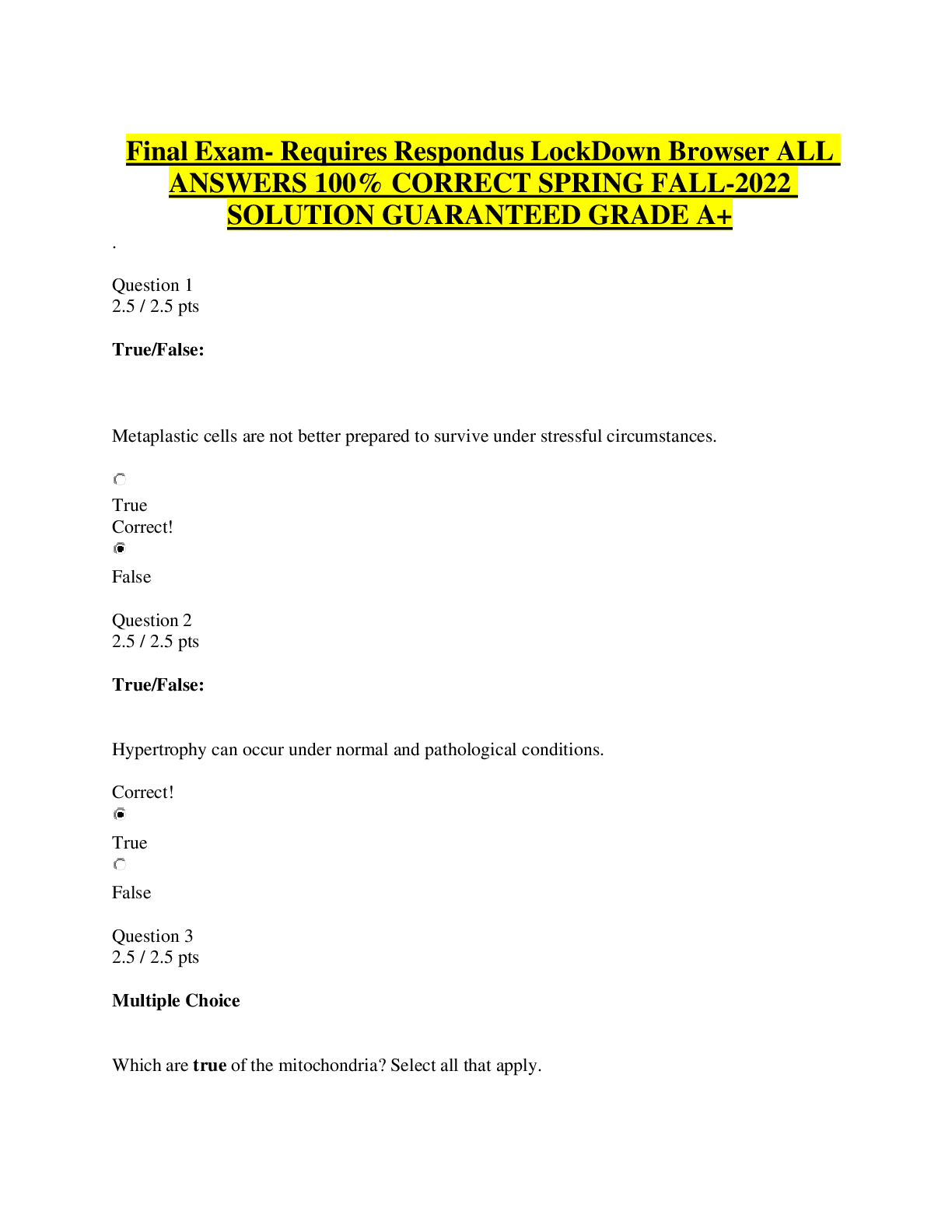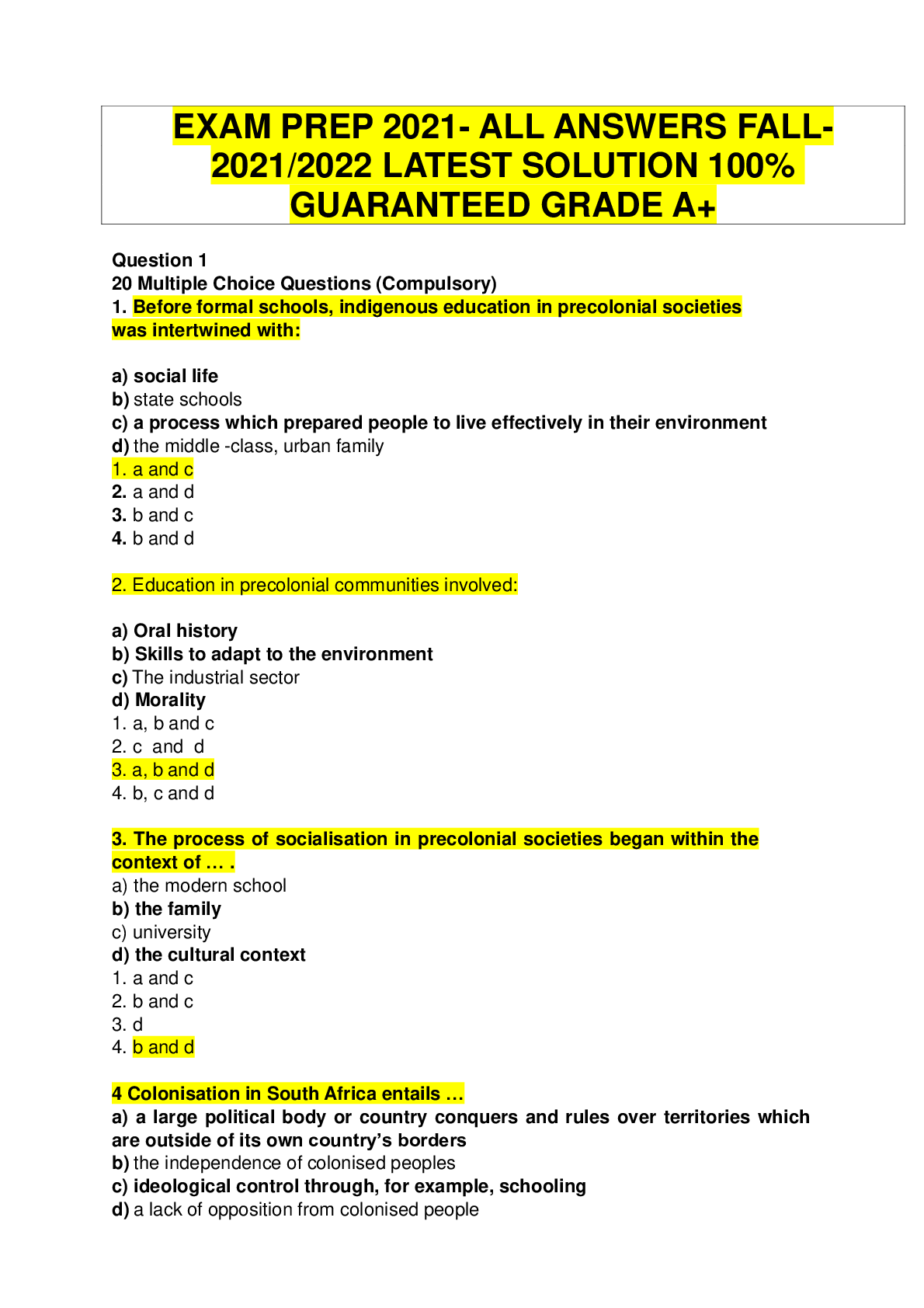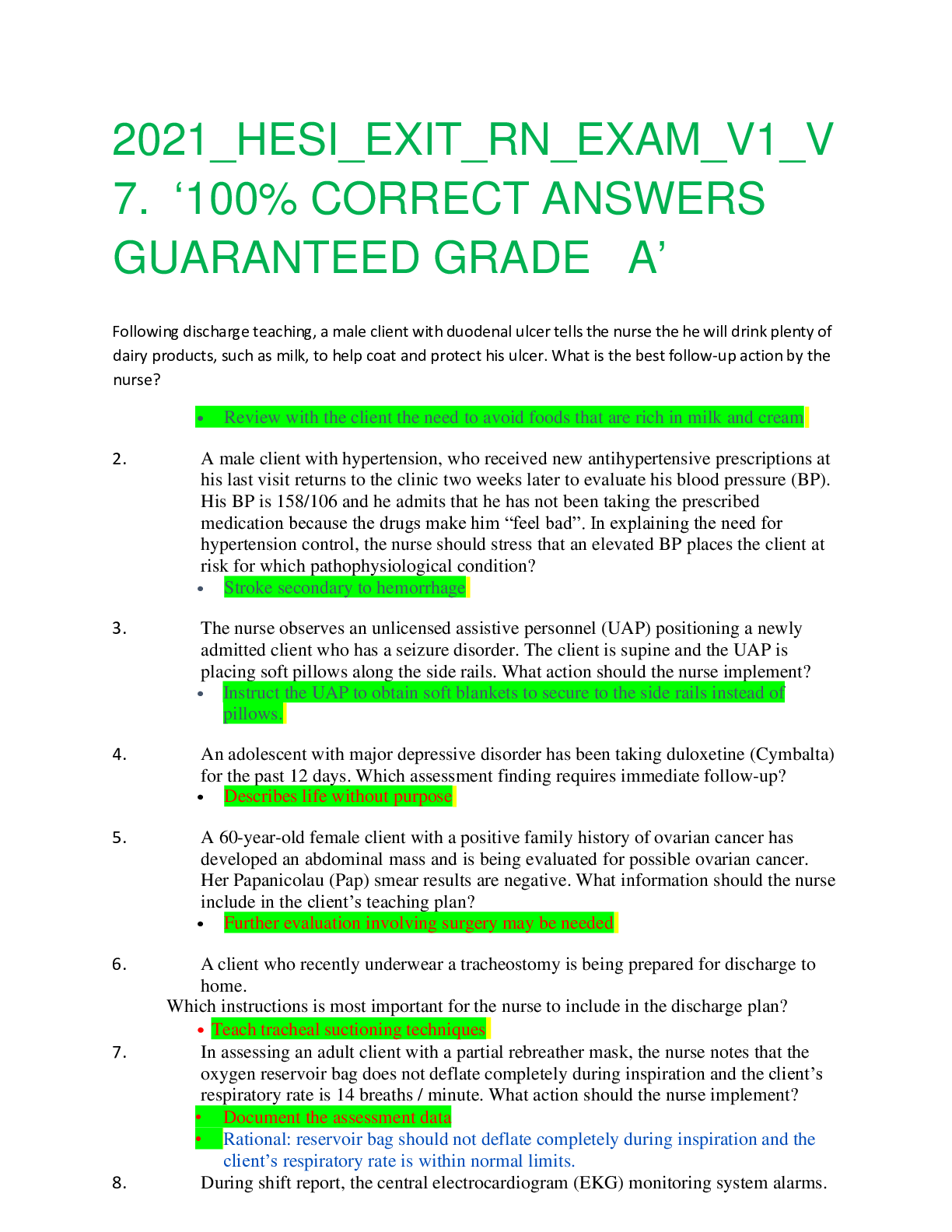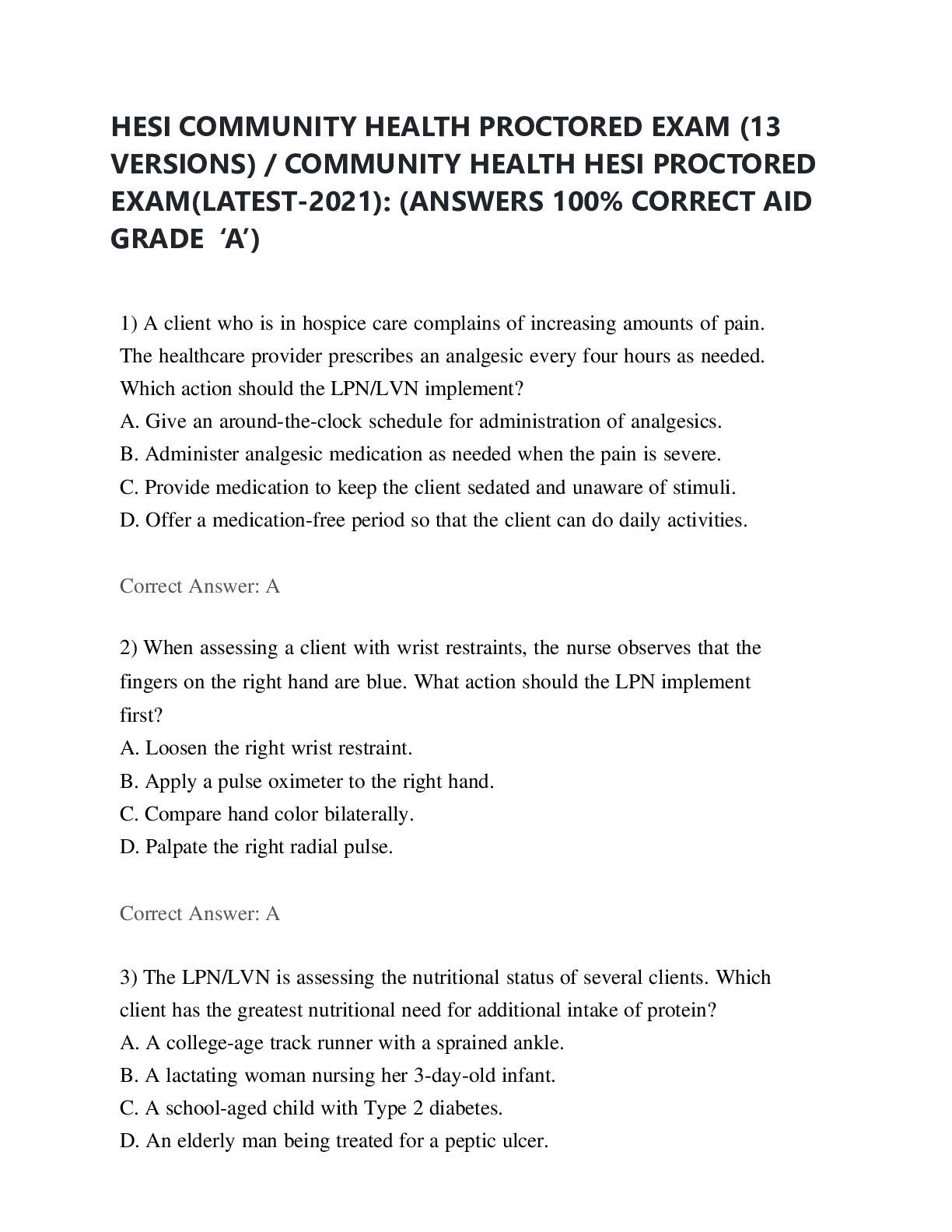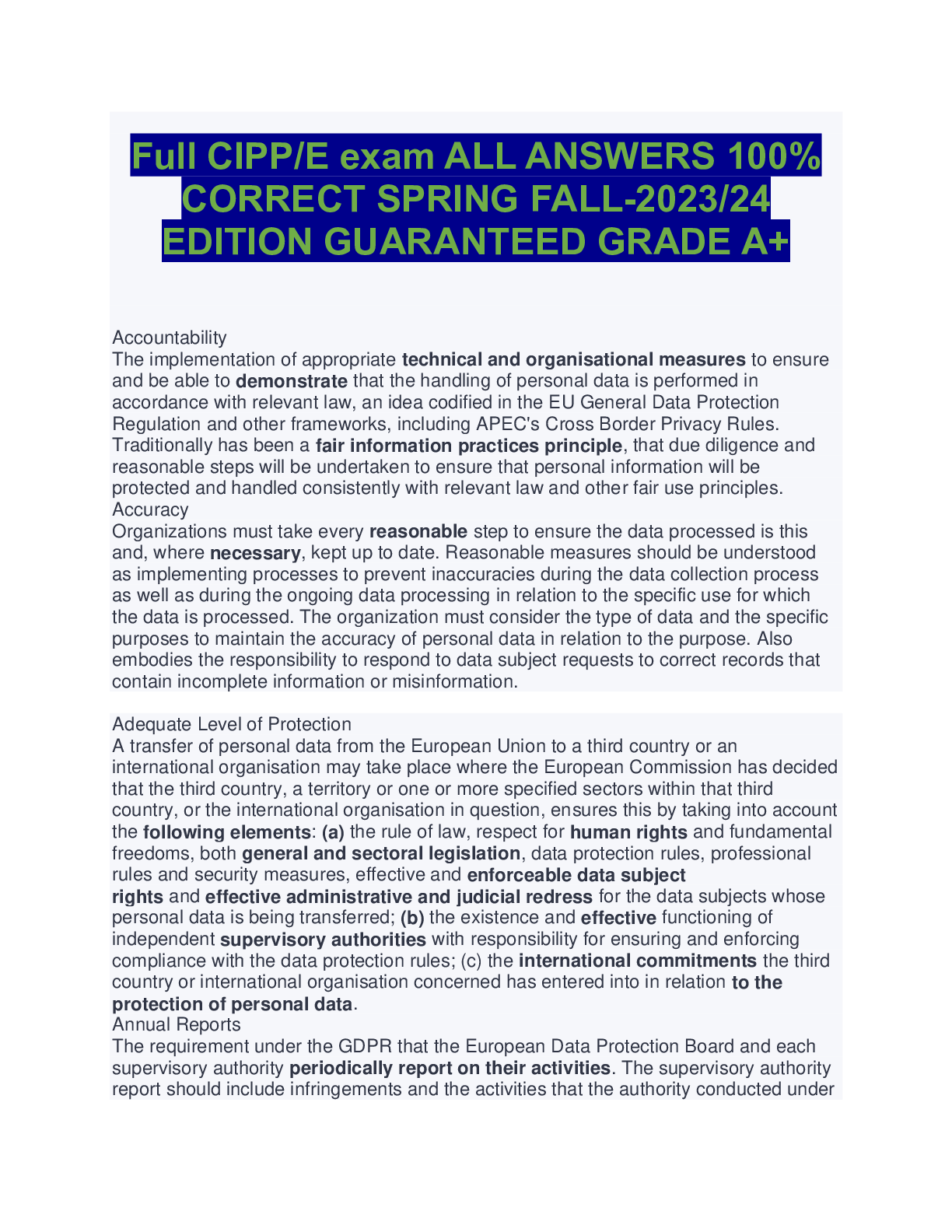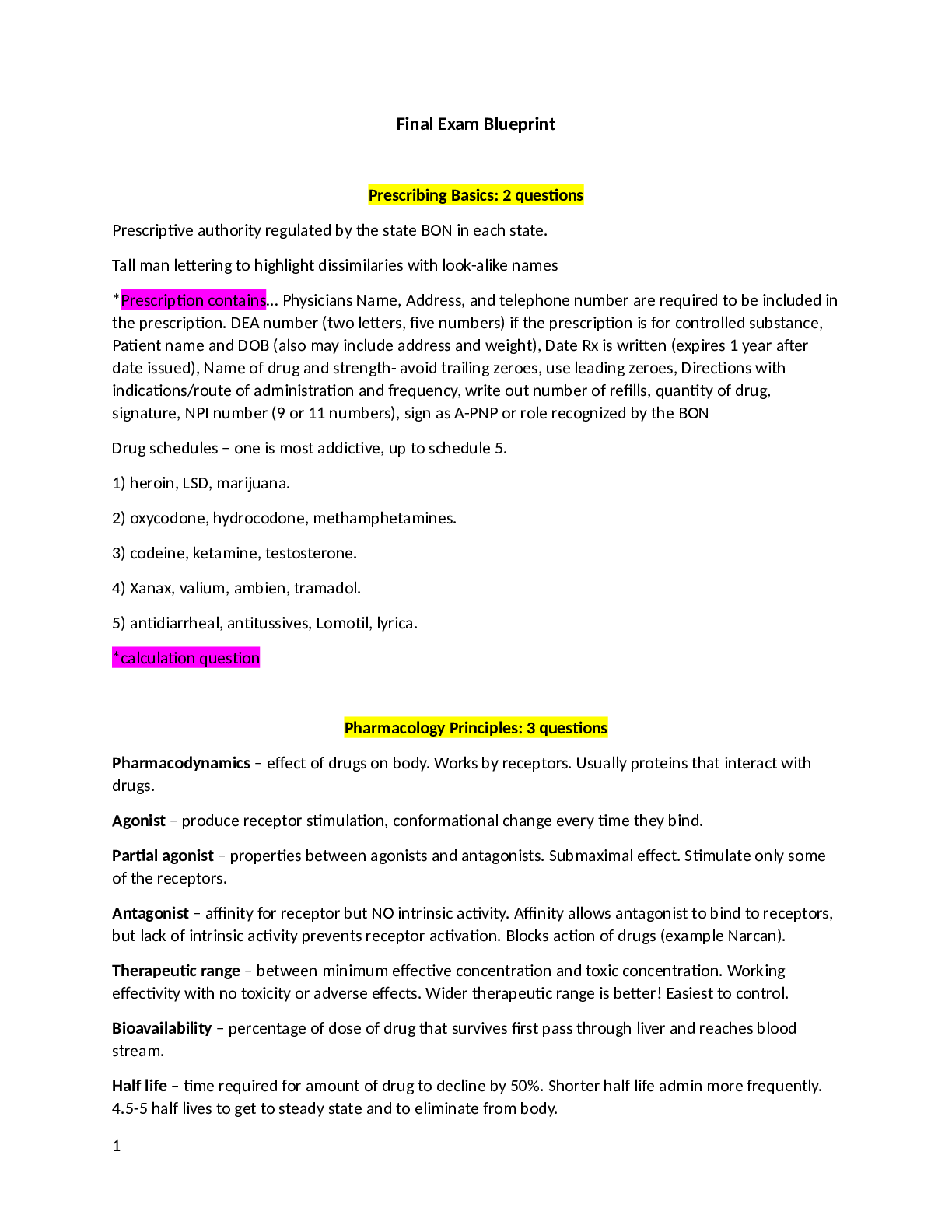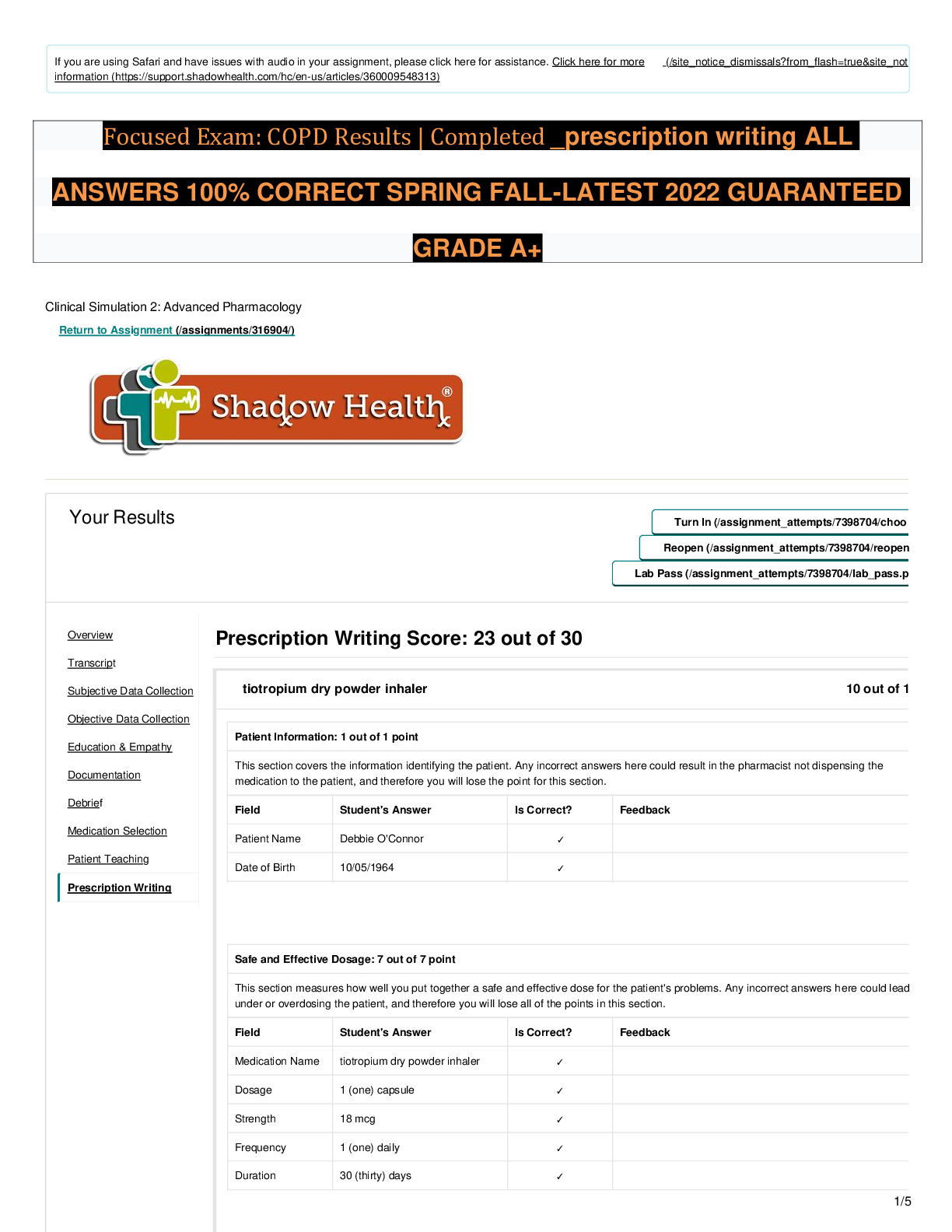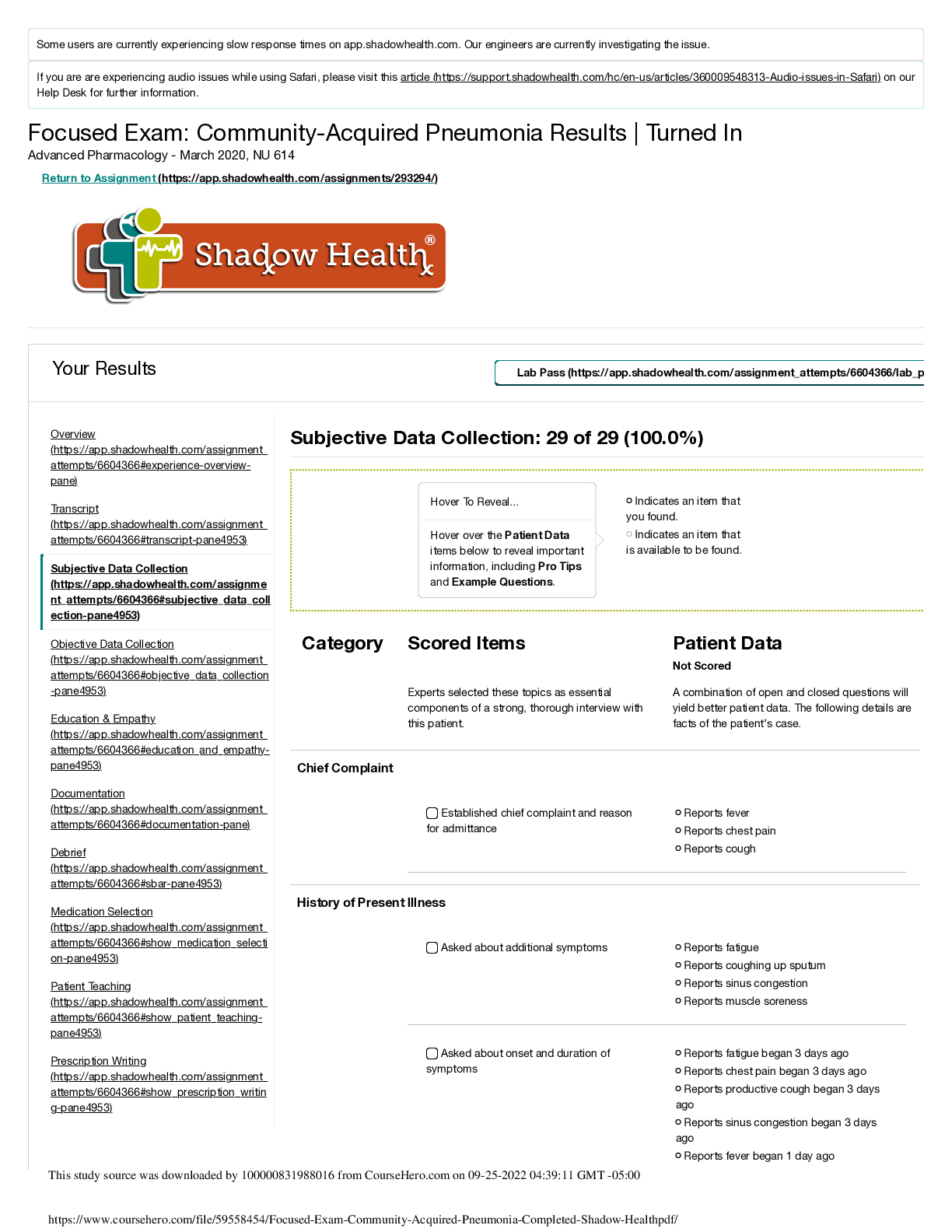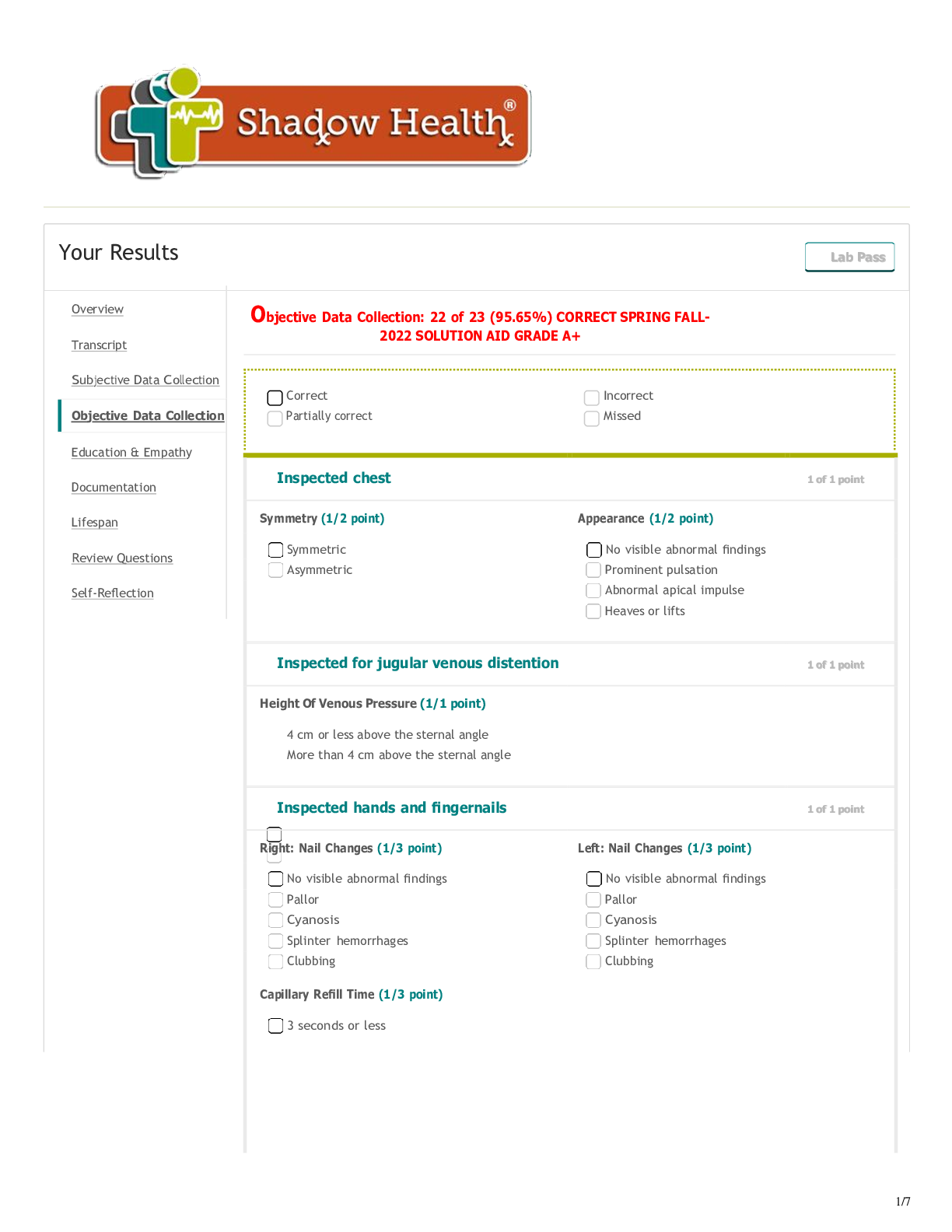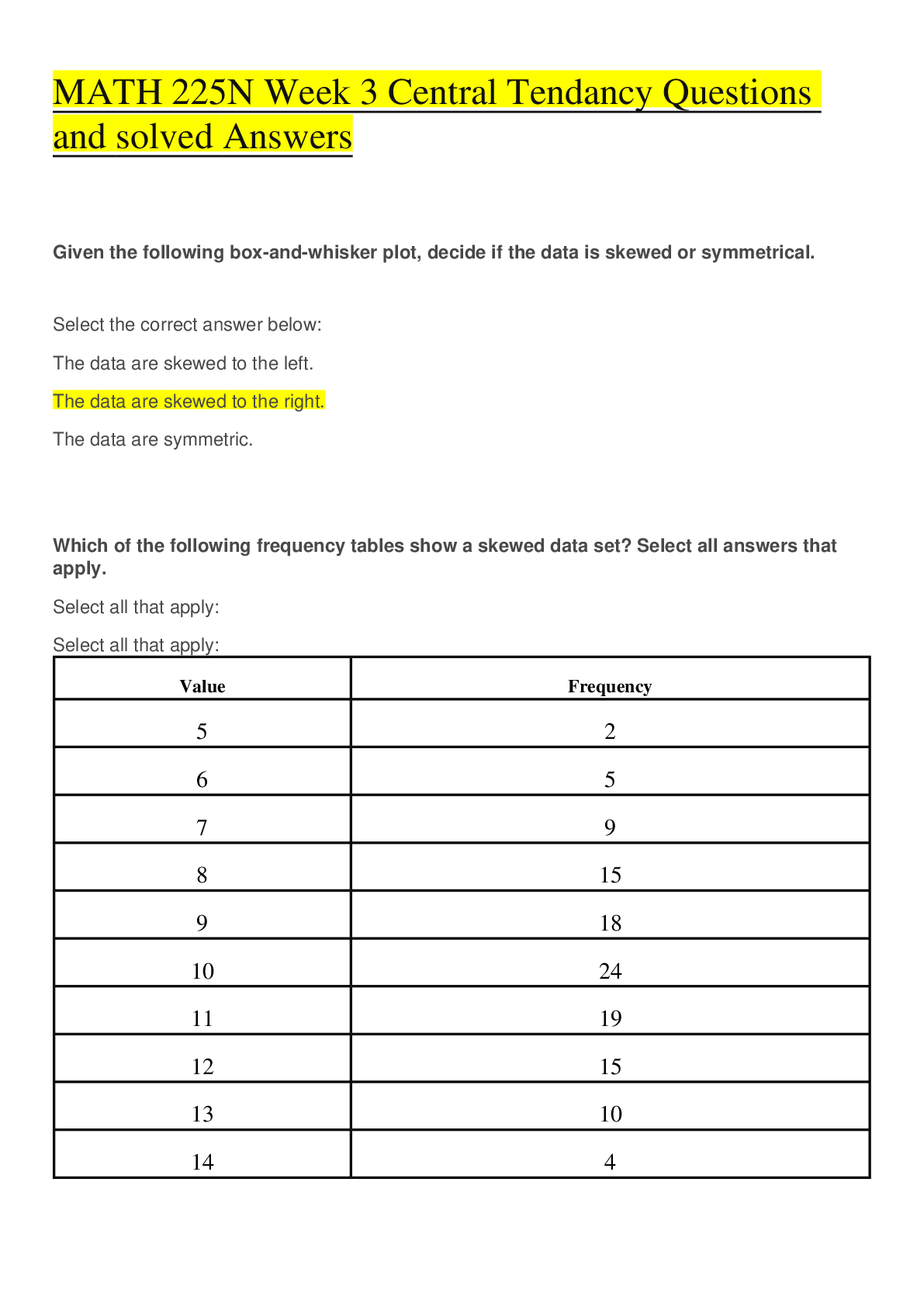*NURSING > EXAM > ATI Proctored Exam: Community Health (Public Health) ALL ANSWERS 100% CORRECT SPRING FALL-2022/2023 (All)
ATI Proctored Exam: Community Health (Public Health) ALL ANSWERS 100% CORRECT SPRING FALL-2022/2023 LATEST SOLUTION GUARANTEED GRADE A+
Document Content and Description Below
Community Health Nursing Theories - Nightingale's Theory of Environment - Health Belief Model - Likelihood of Taking Action Factors - *Nightingale's Theory of Environment*: Focuses on impact of a p... erson's environment on their health. Focus in on preventative care (washing hands, clean environment). *Health Belief Model*: Assumes a persons primary motivation in taking positive health actions is to avoid getting a disease. *Likelihood of taking action is based on*: 1. Modifying variables (age, gender, race, economy, education) 2. Perceived severity and susceptibility of getting the disease 3. Perceived benefits vs. barriers of taking action 4. Cues to action (i.e. advice of doctor, media campaign) Community-Based Nursing versus Community-Oriented Nursing - The community or population is the "client" in community health nursing. *Community-Based Nursing*: Focused on ILLNESS care (acute or chronic conditions) for individuals and families. - Examples: Home Health nurse doing wound care, School nurse administering epi-pen. *Community-Oriented Nursing: Focused on improving the collective health of the community. - Examples: Health education and promotion, disease prevention activities. No illness care! Community-oriented nursing = public health nursing. Community Health Nursing versus Public Health Nursing - *Community Health Nursing*: Delivers health care services to individuals, families, and groups. Includes community-based nursing (illness care for individuals and families) AND community-oriented nursing (community focused care, with an emphasis on education and disease prevention). *Public Health Nursing*: Disease prevention and health promotion of communities and populations. They re not providing direct care to individuals! Public health nursing = community-oriented nursing. Four Ethical Principles in Community Health Nursing - Respect for Autonomy - Non-Maleficence - Beneficence - Distributive Justice - *Respect for Authority*: Respect a patient's right to self-determination. *Non-Maleficence*: Do no harm *Beneficence*: Do what is best (i.e. maximize benefits) *Distributive Justice*: Fair allocation of resources in community. Epidemiology and Components of Epidemiology Triangle - *Epidemiology*: Study of spread, transmission, and incidence of disease/injury. *Components of Epidemiology Triangle* - *Agent*: What is causing the disease (i.e. bacteria, toxin, noise) - *Host*: Human/animal being affected by the disease - *Environment*: Physical environment (water/food supply, geography). Social environment (access to health care, work conditions, poverty). Incidence vs. Prevalence - *Incidence*: Number of NEW case of disease/injury in a population during a specified period of time. *Prevalence*: Number of ALL cases (new and pre-existing) of disease/injury in a population during a specified period of time. Community Health Education and Healthy People 2020 - *Community Health Education* - *Obstacles*: Age culture, illiteracy, language barriers, lack of access, lack of motivation. - *Learning Styles*: visual (video, presentations), auditory (verbal lectures, discussions), tactile-kinesthetic (hands-on, return demonstration). *Healthy People 2020*: Includes national health goals based on major risk to health and wellness of U.S. population (i.e.: Diabetes,Cancer, Older Adults, LGBT health). Primary vs. Secondary vs. Tertiary Prevention - *Primary Prevention*: Prevents initial occurrence of disease. - i.e. education, immunizations, prenatal classes. *Secondary Prevention*: Focuses on early detection of disease, limiting severity of disease. - i.e. screenings, disease surveillance, control of outbreaks. *Tertiary Prevention*: Maximize recovery after an injury/illness. - i.e. rehabilitation, PT/OT, support groups - Acculturation - Ethnocentrism - Cultural Assessment - Interpreter - *Acculturation*: Adopting the traits of a different culture. *Ethnocentrism*: The belief that one's own culture is superior to all others. View world from their own cultural viewpoint. *Culture Assessment*: Ask about patient's ethnic background, religious preference, family structure, food patterns, and health practices. Incorporate patient preferences into care whenever possible. *Interpreter*: Use of family members in not recommended, interpreters need to have knowledge of health terminology. Patient teaching materials should be available in their primary language. [Show More]
Last updated: 2 years ago
Preview 1 out of 11 pages

Buy this document to get the full access instantly
Instant Download Access after purchase
Buy NowInstant download
We Accept:

Reviews( 0 )
$9.50
Can't find what you want? Try our AI powered Search
Document information
Connected school, study & course
About the document
Uploaded On
Sep 02, 2022
Number of pages
11
Written in
Additional information
This document has been written for:
Uploaded
Sep 02, 2022
Downloads
0
Views
49

